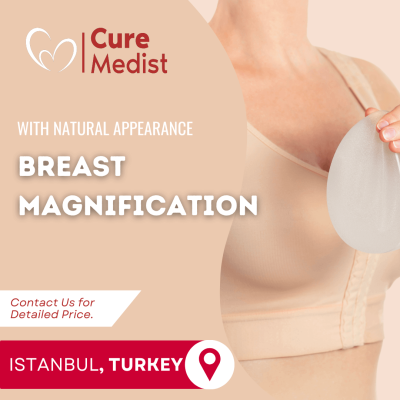Breast augmentation, also known as augmentation mammoplasty, is a surgical procedure designed to enhance the size, shape, and fullness of the breasts. This is typically achieved through the placement of breast implants or, in some cases, through fat transfer. Here’s a detailed overview of breast augmentation:
What is Breast Augmentation?
Breast augmentation is a cosmetic surgical procedure aimed at increasing the size and improving the shape of the breasts. It can also be used to restore breast volume lost after weight loss or pregnancy, achieve a more rounded breast shape, or improve natural breast asymmetry.
Methods of Breast Augmentation:
- Breast Implants:
- Saline Implants: Filled with sterile salt water. They are inserted empty and then filled once they are in place, allowing for a smaller incision.
- Silicone Implants: Filled with silicone gel, which tends to feel more like natural breast tissue. They come pre-filled and require a slightly larger incision.
- Gummy Bear Implants: A type of silicone implant filled with a thicker, cohesive gel that maintains its shape even if the shell is broken.
- Round vs. Teardrop Implants: Round implants are more commonly used and can provide more fullness at the top of the breasts, while teardrop implants are shaped to mimic the natural contour of the breast.
- Fat Transfer Breast Augmentation:
- Involves liposuction to remove fat from other parts of the body (such as the abdomen, thighs, or flanks), which is then purified and injected into the breasts.
Procedure:
- Initial Consultation:
- Discussion of Goals: The patient discusses their desired outcome with the surgeon, including size, shape, and type of implants.
- Medical Evaluation: A thorough medical history and physical examination are conducted to ensure the patient is a good candidate for the procedure.
- Pre-Operative Preparations:
- Anesthesia: The procedure is typically performed under general anesthesia.
- Incision Options:
- Inframammary Incision: Made in the fold under the breast.
- Periareolar Incision: Made around the lower edge of the areola.
- Transaxillary Incision: Made in the armpit.
- Transumbilical Incision: Made near the belly button (less common).
- Implant Placement:
- Subglandular Placement: Implants are placed directly behind the breast tissue, over the pectoral muscle.
- Submuscular Placement: Implants are placed under the pectoral muscle. This placement can reduce the risk of certain complications and provide a more natural contour.
- Insertion and Adjustment:
- The surgeon inserts the implant through the incision and carefully positions it in the pocket. For fat transfer, the purified fat is injected into the breasts.
- Closure and Bandaging:
- Incisions are closed with sutures, skin adhesives, or surgical tape. The breasts are then bandaged, and a support bra is typically provided to minimize swelling and support the breasts as they heal.
Recovery:
- Immediate Post-Operative Care:
- Observation: The patient is monitored in a recovery area until they are stable enough to go home.
- Pain Management: Pain and discomfort are common and managed with prescribed medications.
- Short-Term Recovery:
- Rest: Patients are advised to rest and avoid strenuous activities for several days to weeks.
- Follow-Up Appointments: Regular check-ups are scheduled to monitor healing and address any concerns.
- Long-Term Recovery:
- Swelling and Bruising: These typically subside over a few weeks.
- Activity Restrictions: Patients should avoid heavy lifting and high-impact activities for several weeks.
- Final Results: The final appearance of the breasts may not be fully apparent until several months after surgery.
Benefits:
- Enhanced Appearance: Improved breast size, shape, and symmetry can enhance body image and self-confidence.
- Restored Volume: Effective for restoring breast volume lost after pregnancy, weight loss, or aging.
- Customization: A wide range of implant types, sizes, and shapes allows for personalized results that meet the patient’s aesthetic goals.
Suitability:
- Good Candidates: Individuals in good overall health with realistic expectations and no active infections or untreated cancer.
- Age Considerations: The FDA recommends that patients be at least 18 years old for saline implants and at least 22 years old for silicone implants.
Breast augmentation is a highly individualized procedure that should be carefully considered and thoroughly discussed with a qualified plastic surgeon to ensure the best possible outcome based on individual goals and circumstances.




